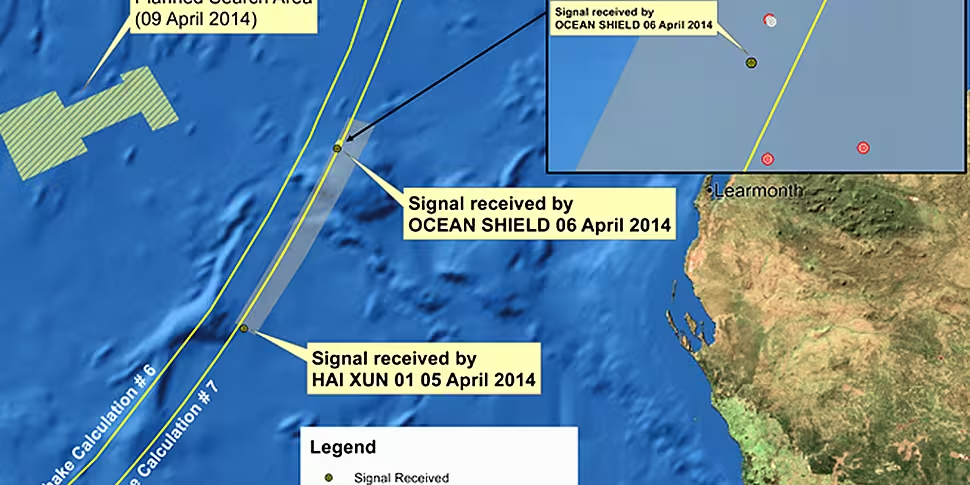A navy ship has picked up two further signals from what could be the black boxes of missing Flight MH370. The "reacquiring" of sounds on two more occasions by search teams is being described as "encouraging".
Australia's Ocean Shield navy ship first detected the sounds late on Saturday and early Sunday before losing them. Search coordinator Angus Houston said the ship relocated the signals on Tuesday afternoon and then later that night.
An analysis of the earlier signals found they were stable, distinct, and clear sounds that had a consistent pulse, indicating they were from a plane's black box.
"They (the analysts) believe the signals to be consistent with the specification and description of a flight data recorder" he added.
Mr. Houston went on "It's nothing natural. It comes from a man-made device".
The new signals may allow the search to be concentrated on a much smaller area of the southern Indian Ocean, and open the way for the use of an unmanned submarine to look for wreckage.
Mr. Houston said "Now hopefully with lots of transmissions we'll have a tight, small area and hopefully in a matter of days we will be able to find something on the bottom. I'm now optimistic that we will find the aircraft, or what is left of the aircraft, in the not too distant future - but we haven't found it yet, because this is a very challenging business".
Earlier, it was feared the audio signal from the plane's black boxes may have died. And Mr. Houston acknowledged time was running out, noting the signals picked up on Tuesday were weaker and briefer than those heard over the weekend.
The location of the 'pings' that have been detected
"So we need to, as we say in Australia, 'make hay while the sun shines'," said Mr. Houston.
The data recorders could provide critical information about what happened to the aircraft, which disappeared on March 8th with 239 people on board. It is thought the airliner crashed into the Indian Ocean after veering thousands of miles off course.
The authorities say evidence indicates the plane was deliberately diverted by someone, but have not ruled out mechanical problems.
The Australian Maritime Safety Authority (AMSA) has planned a search area of about 75,423 square kilometres. The centre of the search area is approximately 2,261 kilometres north west of Perth.










